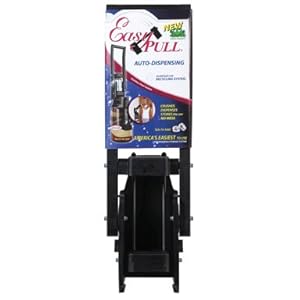Grain mills have grown over the ages from manual ones to more sophisticated galvanic grain mills. Grinded and fresh flour can be made available within a matter of a few minutes with the help of modernized versions of the mills. One of top two methods of choosing a allowable mill is by choosing the ideal type of power source and the type of grist mechanism. All types are useful to a separate set of people in business of flour manufacturing & distribution and to families. The customary choice criteria ordinarily boil down to three aspects - Cost, potential and versatility.
Gran Mill Types On The Basis Of grist Mechanism
Each has characteristics of crushing, grist and beating grains into meals of varying textures from tasteless to fine. Some of the mills have better capabilities as they grind soft, oily and hard items in one go. Burr mills and impact mills are by and large the most tasteless types of grind mills.
Can Crusher
Burr Grain Mills
Their building is pretty simple. One plate is static and the other plate is connected to a power source. The whole grains are fed to the gap in-between the burrs. These are grooved to aid in crushing of the grain. Composite stone burrs are made by crushing natural or artificial stones on a uniform spread of cement. Metal stones are also utilized for development this type of mill. Metal burrs are made from casted steel. Stone burrs crush the whole grain while their metal counterparts shear or break it.
Advantages-
Unlike stone mill, burr mill can mill dry grain and oily grain with ease.
Disadvantages-
The burr will not grind fine floor as stone mill would.
Impact Grain Mills
They are made from stainless steel with concentric rows. They utilize the power source. Whole grains are fed into the gaps in the middle of the concentric plates. An galvanic furnish causes high speed motion. Flour gets collected at the center. It is ordinarily used to deal with dry and non-oily grains. It can yield fine grains.
Advantages-
- It is small, light, compact and can takes puny space of storage.
- Grinds very fast.
- Grinds very fine floor.
Disadvantages-
- Needs completely cleaned grain as not-so-clean grain can damage the brittle blades.
- It is noisy.
Gran Mill Types On The Basis Of Power Source
Manual Grain Mills-
These are bulkier grist mills which require the grain crusher to be rotated with hands. They are normally referred to as "hand grain mills". Hand grain grist helps in preserving the nutrient value of the grain and ordinarily produces more of tasteless flour. Gradually these are phasing out as the time consumed in flour manufacturing straight through this type is quite high but on the other hand many people prefer using this type of mill over the automatic one.
Electric Grain Mills-
These are modernized versions of the old manual mills. However, these are highly sufficient and take less time to yield flour from the whole grains. These are relatively cheap and are available in range of sizes.
Convertible Mills-
These are hybrid types which can be converted from manual to galvanic and vice-versa based on the requirement. It is prominent to opt the right type of convertible grain mill.
I hope you find this information useful and that it will help you to select the grain mill that will meet your needs.
Types of Hand Grain Mills in Depth
No comments:
Post a Comment